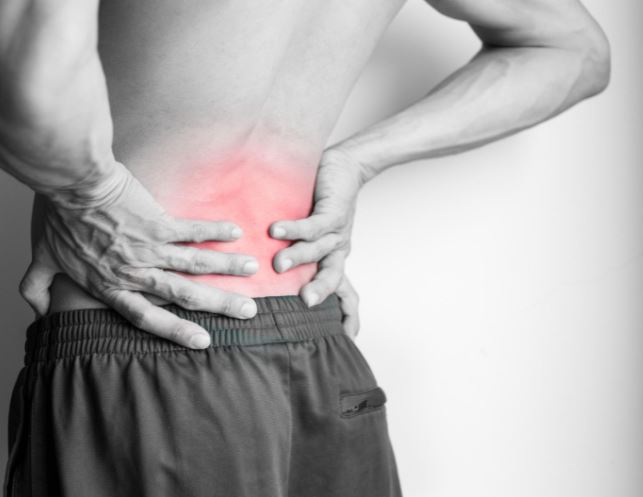 You’ve heard of flattening the curve for COVID-19. You should hear about it for spinal cords.
You’ve heard of flattening the curve for COVID-19. You should hear about it for spinal cords.
Two to three percent of American children have a curve in their spine. It affects how they move, stand, and interact with others.
When people think about spinal curves, they often think about scoliosis. They should. But everyone should also be mindful of kyphosis.
What is scoliosis vs kyphosis? What are their symptoms for children and adults? How can doctors treat them, including through surgery?
Answer these questions and you can correct your spine today. Here is your quick guide.
What Is Scoliosis?
Scoliosis is a side-to-side curve of the spine. The spinal cord can take an S or C shape.
It occurs most often in children who are growing. As a child grows, their vertebrae become misaligned. Activities that require a lot of movement like gymnastics can pull muscles and vertebrae out of line.
But it can occur in older adults. Wear and tear can pull vertebrae out of line and weaken the ligaments between them. In rare cases, children can get congenital deformities that twist their spine.
Genetics may play a role as well. If you have a relative who has scoliosis, you are more likely to acquire it.
Signs of Scoliosis
Scoliosis can be minimal. A person may notice a small curve in their spine, but they may not have any side effects.
Other people may experience muscle pain or weakness, especially in their back. They may notice that they lean to one side more often.
The spine provides the structure for the rest of the body. If the spine is misaligned, the hips or shoulders can become misaligned. A person may notice a problem with their hips before they see something wrong with their spine.
In rare cases, a person may have mobility issues. They may lack a full range of movement, or they may be unable to move without pain.
How to Treat Scoliosis
Minor cases of scoliosis do not require extensive treatment. For a child going through puberty, their growth spurts may bring their vertebrae back into place. The child and their doctor should monitor the spine, but they may need to do nothing.
If intervention is needed, the child can perform some stretches. The Cat-Camel pose can increase flexibility in the spine.
A person can take some medication to mitigate pain and discomfort. But pills cannot correct the curvature of the spine.
Minimally invasive spine surgery can correct any curvature. A surgeon will make small incisions into a patient’s back. They can expand nerves and decompress vertebrae, creating less pain.
Patients who have extensive curves can get more extensive measures. They will receive anesthesia, so they do not remember the surgery. Nearly all scoliosis operations are safe with minimal side effects.
A patient may need to wear a back brace to keep the spine in place. They should also practice good posture, standing, and sitting without slouching.
What Is Kyphosis?
Kyphosis is a forward-and-back curve of the spine. Most people have such a curve, which allows them to move their arms forward.
It becomes a problem when the spine bends forward far more than it should. The back can become rounded or slouched.
As with scoliosis, kyphosis first appears in adolescence. As a child grows, their spine shifts forward. Slouching and activities that require bending over can pull the vertebrae out of place.
But it can come from degeneration of the spinal cord. Wear and tear can weaken the ligaments that connect the vertebrae together.
Conditions like osteoporosis can facilitate kyphosis. In rare cases, tumors can create a curve.
Symptoms of Kyphosis
The symptoms of kyphosis are very similar to scoliosis. A person may not have any issues with their spine. They may detect an unusual curve, but they are able to move and stand fine.
They may experience pain in their back, shoulders, and hips. The pain may come across as an ache or as muscle stiffness. They may notice their shoulders and hips are crooked.
A few people may have impaired mobility, especially in their arms and torso. They may experience persistent pain that hurts their quality of life.
How to Treat Kyphosis
As with scoliosis, some people may need no treatment whatsoever. As they grow, their vertebrae will settle back into place.
Older people do need treatment, and most of it is non-surgical. Physical therapy can restore mobility, decrease pain, and reposition the vertebrae. Upright movements are particularly helpful in correcting the curvature.
Braces are also particularly helpful. Osteoporosis and age-related conditions do not have cures, so a brace can prevent the spine from falling more out of place.
Surgery is a rare intervention. It involves small incisions into the back that expose skeletal muscles and bones. The surgeon inserts hollow screws that can hold the bones in place while allowing spinal fluid to pass through.
Recovery time can last a few weeks, and a patient needs to be careful when moving. But surgery offers a permanent solution for extreme cases.
Scoliosis vs Kyphosis
Scoliosis vs kyphosis divide is not significant. Both are spinal conditions that involve curvatures. Scoliosis is side-to-side curvature, while kyphosis is front-to-back.
Both are common in children, though they can appear in adults. Both present with muscle pain, weakness, and impaired mobility. Kyphosis can appear alongside osteoporosis and other age-related conditions.
Treatments for both conditions are also very similar. Most cases require stretching and posture adjustments. Surgery can be minimally invasive, releasing nerve pain and muscle tension.
You can stay fit if you understand the essential facts. Follow our coverage for health and fitness guides.




